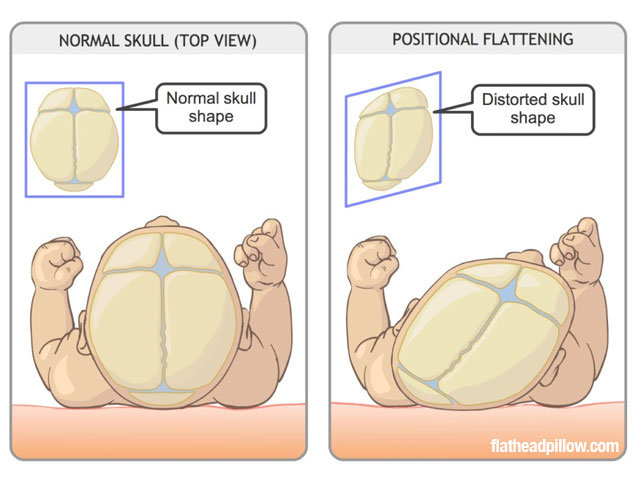Flat Head (Plagiocephaly)
Flat Head (Plagiocephaly)
Plagiocephaly is a disorder that affects the skull, making the back or side of a baby’s head appear flattened. It is sometimes called deformational plagiocephaly.
Since babies have been put on their backs to sleep (to prevent cot death) the frequency of babies with flat heads in the first few months of life has increased significantly. However, the good news is that you do not see lots of older children walking around with flat heads as for the majority of babies this is a temporary phenomenon which will resolve as the baby spends more time upright no longer putting pressure on one aspect of their skull.
Plagiocephaly does not cause pressure on the brain, affect brain development, cause pain or other symptoms. It is neither more nor less common in Cayman than elsewhere!
Who gets a flat head?
It affects males and females equally and there is no obvious racial element. Premature babies are more likely to get plagiocephaly than those born at term probably because the skull plates become stronger in the last few weeks of pregnancy.
What causes plagiocephaly?
Positional plagiocephaly is produced by external pressure on an area of the skull. It can occur while your baby is still developing in the womb but in recent years, flattening occurring after the baby is born has become much more frequent.
In a baby, the skull is made up of plates of bone which have not joined together. These bones gradually grow and fuse together over the first couple of years of life. In young babies, these plates of bone are relatively soft and prone to moulding (or changing shape if pressure is persistently applied to them. Persistent pressure on the back or side of the head can cause the skull to become flattened in that area.
How can I prevent or reduce a flat head?
Remember the dangers of cot death far outweigh the dangers of plagiocephaly
When your baby is wake and you are present encourage tummy time and side lying. Both will reduce the degree of pressure on the back of the skull and therefore plagiocephaly
Make time to hold your baby or carry them around in a baby sling. Again this reduces time that pressure is placed on the back of the head.
Move your baby around their cot. Babies often focus on the same thing so place objects in different places out of their reach for them to focus on therefore reducing pressure on a single part of the skull.
Do not always feed your baby in the same position.
If your baby naturally always lies on one side of the head try to place them on the other side or encourage them to look in that direction by the use of hanging mobiles etc. don’t have anything that is exciting on the side that will further encourage them to lie on the side they already prefer.
If your baby has started to develop a flat head place a rolled up towel under the mattress on that side. This helps reduce the pressure on the flattest part of the head.
Try to vary the type of surface your baby lies on. In the literature both hard and soft surfaces have been implicated in the development of plagiocephaly.
Physiotherapy
Pillow and helmets
There is no real evidence that helmet treatment benefits children with plagiocephaly and their use is controversial. If a decision is made that a baby requires a helmet then treatment needs to commence between 4 and 6 months of age while the skull is still compliant. In Grand Cayman, helmet treatment is coordinated through the hospital physiotherapy department and the orthoptist. The child will need to wear the helmet for 23 hours of everyday for several months. The aim of helmet treatment is to relieve pressure on the flattened area allowing it to grow and re-mould and to place pressure on the relatively bulging area.
Again there is no evidence that pillows work. The premise behind them is that they reduce pressure on the area of the head that is being moulded. If you are going to use a pillow do your research carefully. Paediatricans do not recommend pillows for any baby because of the risk of suffocation.
Still have concerns?
If you want specific advice or are concerned about your baby’s head shape, please get in touch with Dr Sara Watkin.
